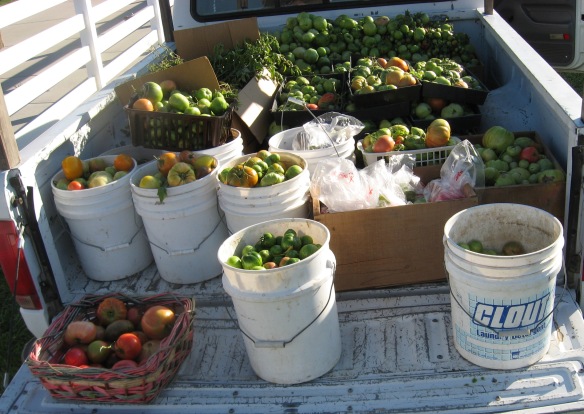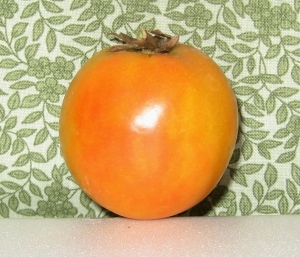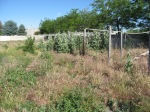On October 26, 2011 I picked about 800 pounds of tomatoes, mostly green, ahead of the first hard Fall frost.

One of the green one’s was a Reverend Morrow’s Long Keeper. Over the past several months, I’ve kept this tomato at room temperature. It’s been displayed at seed swaps and various meetings and has been handled on numerous occasions.
I did not expect it to last past February, but it remained in good condition (though dried out and wrinkled somewhat) until a couple of days ago when I noticed a brownish spot starting to develop. So last night, a full 235 days from harvest, I cut it open and harvest the seeds:






The obvious question, “Was it worth eating”? No – not fresh anyway. It had a strong tomato flavor but with no sweet at all. Of course the texture was dry. I think it would do just fine cooked in a sauce, added to pizza, or maybe in a salad.
It’s a remarkable acheivement by Merlyn Niedens who spent many years developing this variety. This means, theoretically, that a tomato lover could eat a “fresh” tomato just about every day of the year.
The next question is, “Are the seeds viable”? That question will be answered in about two weeks.
================
P.S., 9-09-2012 – looks like I forgot to follow through on this. I planted 20 seeds on 6-20-2012. One of them emerged within 4 days. Another 13 emerged gradually over the next couple of weeks. Three more emerged much later. I have a few plants in pots with small fruit setting, but I’m not sure if they’ll be able to ripen before frost. Here’s a pick from 7-11-2012.
 ================
================
P.P.S., 1-05-2013 – Several of the seedlings in the above pic were finally transplanted into an unheated high tunnel on 10-01-2012 – now THAT’s a late start for tomatoes!! Even so, I managed to pick 3 small, ripening tomatoes on 12-14-2012 which had minimal frost damage. I’m anxious to see, once again, if one of these can last into summer. Here’s a pick of the best-looking one today:























